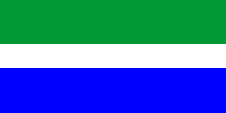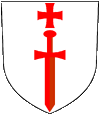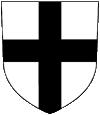Livland |
|
|
|
Livland |
|
|
|
Flagge – Flag: |
|
 |
Nationalflagge der Liven |
| Die
Flagge Livlands, oder besser gesagt der Liven, zeigt drei waagerechte
Streifen in Grün, Weiß und Blau im Verhältnis 2:1:2. Die Farbe Blau repräsentiert das Meer, Weiß den Strand und Grün die Wälder. Angeblich symbolisiere die Flagge den Blick vom Meer in Richtung des Festlands: unten das Wasser, in der Mitte der weiße Strand, im Hintergrund der grüne Wald. Die historischen Farben Livlands sind jedoch Weiß und Rot. Die Gestaltung der Flagge mit dem schmalen Mittelstreifen lässt eine Verwandtschaft zu Lettland erahnen, und tatsächlich leben die Liven in Lettland, im Nordwesten von Kurland, an der Küste. Sie sind ein stark lettisiertes Volk und zählen nur noch ca. 250 Mitglieder, von denen noch etwa 30 die Livische Sprache sprechen können. |
The flag
of Livonia, or better of the Livs, shows three horizontal stripes in green,
white and blue in the ratio 2:1:2.
The color blue represents the sea, white the beach and green the forests.
Supposedly, the flag symbolizes the view from the sea towards the mainland:
the water below, in the middle the white beach and in the background the
green forest. The historic colors of Livonia, however, are white and red. |
| Quelle/Source: Wikipedia (D) | |
historische Wappen – historical Coats of Arms: |
|
 |
1230–1237, Wappenschild des Schwertbrüderordens – Coat of arms of the Order of the Sword Brothers, Quelle/Source, nach/by: Wikipedia (EN) |
 |
1237–1561, Wappenschild des Deutschen Ordens – Coat of arms of the Teutonic Order (Teutonic Knights), Quelle/Source, nach/by: Wikipedia (EN) |
 |
ca.1880–1918, Wappen von Livland – coat of arms of Livonia, Quelle/Source, nach/by: Wikipedia (DE) |
| Das historische Wappen des Gouvernements Livland zeigt einen silbernen Greif mit Schwert auf rotem Schild. | The historical coat of arms of the Governorate of Livonia shows a silvery griffin with a sword on a red shield. |
| Quelle/Source: Volker Preuß | |
| Landkarte des Baltikums – Map of the Balticum: |
|
| Zahlen und Fakten – Numbers and Facts: | |
|
|
|
|
|
|
|
|
|
|
|
|
|
|
|
|
|
| 9. Jhd. ·
Besiedlung durch die Liven 1202 · Gründung des "Schwertbrüderordens" in Dünamünde 1230 · Eroberung Kurlands, Livlands, Lettgallens und Semgallens durch den Schwertbrüderorden 1236 · Niederlage des Schwertbrüderordens gegen die Litauer 1237 · Vereinigung des Schwertbrüderordens mit dem Deutschen Orden, Kurland, Livland, Lettgallen und Semgallen kommen als Livländischer Bund mit einem eigenen Ordensmeister an den Staat des Deutschen Ordens 1558–1595 · Livländischer Krieg, der livländische Ordensmeister des Deutschen Ordens wandelt Kurland und Semgallen in ein Herzogtum als polnisches Lehen um, Estland musste an Schweden und teilweise an Dänemark abgetreten werden, Livland und Lettgallen kamen direkt an Polen 1621 · Schweden erobert Livland 1629 · Livland kommt offiziell an Schweden 1710 · Nordischer Krieg, Russland erobert Livland 1721 · Frieden von Nystad, Livland und Estland kommen an Russland, Kurland, Semgallen und Lettgallen bleiben bei Polen, Livland wird ein eigenes russisches Gouvernement 1914–1918 · Erster Weltkrieg: 1918 das Deutsche Reich erobert Livland 07.11.1917 · bolschewistische Revolution in Russland, Machtergreifung durch die Sowjets 03.03.1918 · Sowjetrussland kapituliert gegenüber dem Deutschen Reich, Friedensvertrag von Brest-Litovsk, Herausbildung der baltischen Staaten, Livland wird zwischen Estland und Lettland aufgeteilt |
| 9th cent.
· settlement by the Livonians 1202 · establishment of the "Order of the Sword Brothers" in Duenamuende 1230 · conquest of Courland, Livonia, Latgalia and Semigallia by the Order of the Sword Brothers 1236 · defeat of the Order of the Sword Brothers against the Lithuanians 1237 · unification of the Order of the Sword Brothers with the Teutonic Order, Courland, Livonia, Latgalia and Semigallia come as Livonian Federation with an own Master to the State of the Teutonic Order 1558–1595 · Livonian War, the Livonian Master of the Teutonic Order transforms Courland and Semigallia in a duchy as a Polish enfeoffment, Estonia was to cede to Sweden and partially to Denmark, Livonia and Latgalia came directly to Poland 1621 · Sweden conquers Livonia 1629 · Livonia comes officially to Sweden 1710 · Nordic War, Russia conquers Livonia 1721 · Peace of Nystad, Livonia and Estland come to Russia, Courland, Semigallia and Latgalia remain at Poland, Livonia becomes an own Russian gouvernement 1914–1918 · First World War: 1918 the German Empire conquers Livonia 7th of November 1917 · bolshevistic revolution in Russia, seizure of power by the Soviets 3rd of March 1918 · Soviet Russia capitulates towards the German Empire, Peace Treaty of Brest-Litovsk, development of the Baltic states, Livonia becomes separated between Estonia and Latvia |
| Quelle/Source: Atlas zur Geschichte, Wikipedia (DE) |
| Der Name "Livland" geht auf den einst mächtigen baltischen Stamm der "Liven" zurück. Die Liven sind heute fast ausgestorben. Livland wird von den Letten "Vidzeme" genannt, und von den Esten "Liivimaa". | The name "Livonia" has its roots in the once mighty Baltic tribe of the "Livonians". The Livonians are nowadays nearly extincted. Livonia is named by the Latvians "Vidzeme" and by the Estonians "Liivimaa". |
| Quelle/Source: Die Völker der Erde | |
| Landkarten zur Geschichte des Baltikums – historical Maps of the Balticum: | |
|
|
|
|
|
|
|
|
|